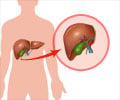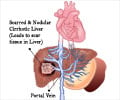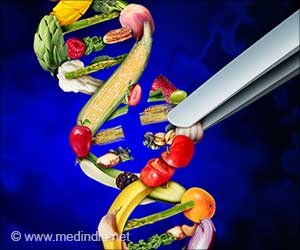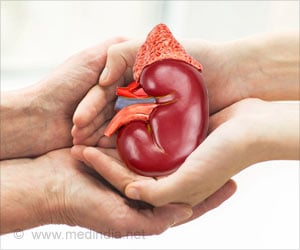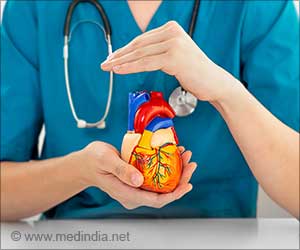Dr Tan Kai Chah make transplants and treatment more accessible to patients now that the organs can be sourced from living donors.
Dr Tan Kai Chah has seen them all in his liver disease centre in Singapore, from ailing Middle East royalty arriving in private jets to desperate charity cases.
But the Malaysian doctor, one of Asia's top liver surgeons, has a more lofty mission: make transplants and treatment more accessible to patients now that the organs can be sourced from living donors, not just cadavers.Liver disease is common in Asia due to poor hygiene practices and dietary habits and many patients end up dying because of sky-high medical costs, inadequate facilities and a small donor pool, experts say.
In Southeast Asia, about six to eight percent of the population suffer from hepatitis B, said Tan, lead surgeon and executive chairman of the Asian Centre for Liver Diseases and Transplantation.
"In some parts of Asia such as China's Pearl River Delta (and) north Vietnam... it can affect up to about 12 percent of the population," Tan, 57, said in an interview with AFP.
Hepatitis C is "very common" in South Korea, Japan, Mongolia and Russia where it affects about three to four percent of the population.
"There are many people suffering from hepatitis infection. Many of them go on to develop liver cirrhosis, which is hardening of the liver, going into liver failure and a substantial number of them develop liver cancer," said Tan.
Advertisement
"Why? Because heart and brain disease is a rich man's disease," said the British-trained surgeon, who has performed 500 to 600 liver transplants so far.
Before medical science made it possible for a portion of the liver to be taken from a living donor, patients had to wait in a queue for someone else to die before they could undergo a transplant.
China's clampdown on the extraction of organs from executed prisoners ahead of its hosting of the 2008 Beijing Olympics cut off a major source for cadaveric transplants, Tan said.
Moreover, superstition and opposition from relatives prevent many individuals from pledging to donate their organs when they die.
But living donors are growing in number due to reduced risks, and rejection in liver cases is the lowest among all major organ transplants, Tan said.
Unlike other organs of the body, the liver can regenerate itself so only a part of it needs to be taken from a healthy donor and transplanted into a patient.
For transplants involving a living donor, many Asian countries like Singapore allow only blood relatives and those who are legally related, such as by marriage or adoption, to donate, the surgeon said.
With fewer people going to China for their transplants, liver operations in the Singapore centre have increased "substantially" over the past two years, he said.
Surgeons at the facility, Asia's first private centre dedicated to the treatment of liver disease, perform 35-40 transplants a year.
About 95 percent of the patients come from outside the city-state, among them super-rich Middle East clients who find it harder to get visas to the US and Europe after the September 11, 2001 terror attacks, Tan said.
"We have poor patients who come to us from Indonesia, from Vietnam, from Sri Lanka," said Tan.
"We also have very, very rich patients who fly in in their private jets for their liver transplant and who wouldn't bat an eyelid if they spend half a million to one million Singapore dollars (357,000-714,000 US)."
A typical liver transplant in Singapore can cost between 250,000 and 300,000 dollars but can reach as high as one million dollars if the hospital stay and other expenses are included.
Tan said treatment has to be made more accessible and affordable in Asia by spreading the expertise.
"If you look at all the regional capital cities, like Manila, Cebu, Jakarta, Surabaya and Kuala Lumpur, you've got heart centres, brain centres but you don't have liver centres, so we feel that there is a niche for us to fill," he said.
Initially, he expects to open satellite liver clinics in Vietnam's Ho Chi Minh City and Seremban in Malaysia in July or August.
Negotiations for similar facilities in Manila and Malaysia's Penang as well as for a liver centre in China are also underway.
The clinics will be doing consultations at first, with the more serious cases referred to Singapore.
But eventually the clinics should progress to handling transplants with the support of local hospitals, and then ultimately on their own, Tan said.
The Singapore centre will provide expertise on starting and managing a liver ward, and help train local doctors and nurses.
To finance the centre's expansion plans, Tan had the company listed on the Australian Stock Exchange in September 2009.
Tan earned his spurs in Britain, where he performed liver transplants from living donors as a consultant at King's College Hospital in London.
Tan, who returned to Asia in the mid-1990s and now races horses as a hobby, said the main challenge is raising public awareness that end-stage liver patients can still cling to some hope.
"As long as the cancer has not spread out (to the other organs), you can look at liver transplant because the success rate is very good."
Source-AFP
THK

